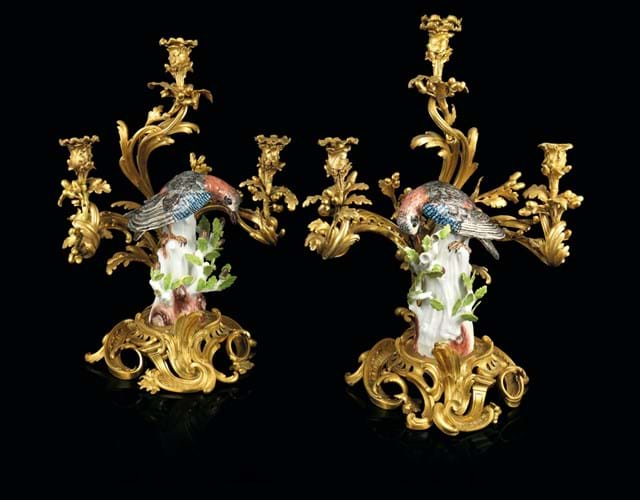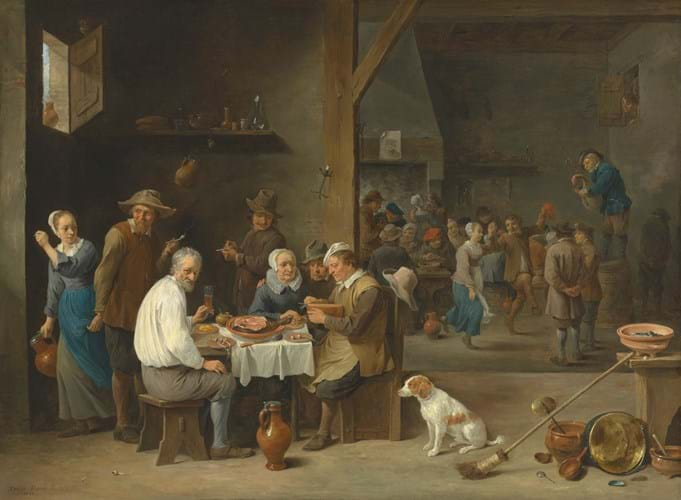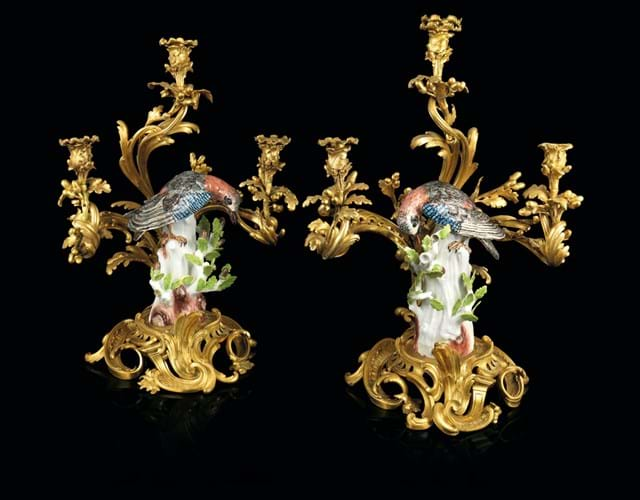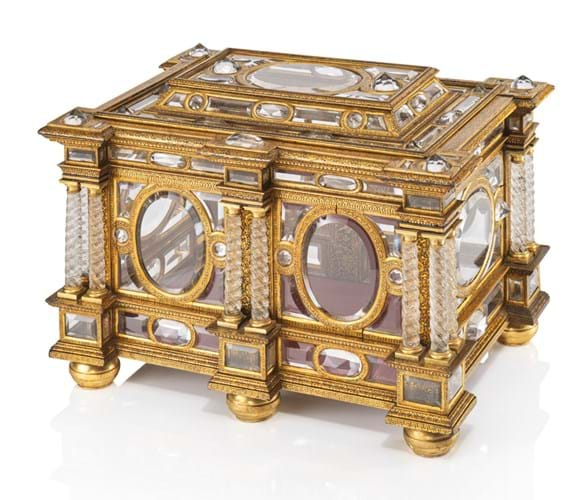The 52 lots of furniture, paintings and works of art collected by members of the Rothschild family (some items came for sale from outside the EU and were potentially subject to 5% import VAT) provided plenty of good old fashioned saleroom drama on July 4 and generated a total of £23.8m with 51 lots sold.
Provenance was key but many of the pieces also fell into ‘the best in class’ category. The seven highlights are pictured here prove that le goût Rothschild, a luxurious interior scheme born in 19th century France, Britain, and Germany, has never really gone out of fashion.
1. Louis XV consoles – £1.55m
This pair of late Louis XV period marble-topped steel and ormolu consoles made to a striking goût grec design were estimated at £400,000-600,000 but sold at £2m. It was the second highest price of the sale topped at £4m by the 1648 genre scene Le déjeuner au jambon by David Teniers the Younger (see below).
The late David Harris Cohen, a curator at the Getty Museum who studied a similar model in the California collection, was the first to identify a group of consoles of this type which he attributed to the work of the serrurier Pierre II Deumier, based on his advertisement published in the gazette of L’Avant-coureur, 8 August 1763. They all share the same neoclassical design, attributed to the architect Victor Louis (1731-1800).
Polished steel was an extremely hard and complex material to work, and furniture made of this material was subsequently very expensive. Only a handful of 18th century examples are known and, by family tradition, this pair was acquired by Baron Gustave de Rothschild (1829-1911) from Galerie Seligmann, Paris. They were possibly those sold on the death of the Marquis de Beringhen, premier écuyer du roi in 1770.
2. David Teniers the Younger genre scene – £4m
Making the highest price of the Rothschild sale, the 1648 Le déjeuner au jambon by David Teniers the Younger (1610-1690) drew several bidders that helped it well over its £800,000-1.2m estimate.
Painted on a comparatively large 2ft 1in x 2ft 10in (64 x 85cm) copper plate, the painting of a classic Flemish tavern scene was deemed a lively and well observed example of the kind of pictures that Teniers developed during the 1630s and 1640s
Knocked down at £4m, it set an auction record for the artist.
3. Louis XV commode – £1.55m

A Louis XV commode by Bernard III van Risenburgh – £1.55m at Christie’s dedicated auction Masterpieces from a Rothschild Collection.
A suite of Louis XV ormolu mounted cabinets by Bernard III van Risenburgh c.1763-70 incorporating late 17th century Japanese lacquer panels were almost certainly those commissioned for Armand-Frédéric-Ernest Nogaret (1734-1806), secrétaire du Roi and trésorier to comte d’Artois.
They were acquired by Baron Maurice de Rothschild (1881-1957) in the inter-war period. Two commodes offered as single lots sold at £1.55m and £1.15m (the more expensive of the two is pictured here) while a matching pair of encoignures sold at £250,000.
4. Julien Le Roy dial – £1.5m
A mechanical minute dial by Julien Le Roy (1686-1759) engraved with the arms of Louis XV was estimated at £60,000-80,000 but sold at £1.5m.
Born in Tours the scion of four previous generations of clockmakers, Le Roy was something of a prodigy. By the age of 13 he had already made his first clock and by 17, apprenticed to Le Bon in Paris, he was capable in finished a repeating watch in just eight days. Appointed Horloger Ordinaire du Roi in 1739, his inventions included turret clocks, equation clocks and pull repeat mechanisms.
The mechanical minute dial brought added accuracy to the portable sundial that was useful only to the quarter hour. By using a sighting device rather than a gnomon, a geared mechanism amplifies movements of the alidade so that a pointer can give the minute of the day.
5. German Renaissance silver-gilt double-cups – £320,000
Considered the perfect examples of German Renaissance silversmithing, silver-gilt double-cups or doppelpokal were highly sought after in the 19th century.
The 18in (45cm) example here carries the mark of Hans Beutmuller of Nuremberg c.1594-1602 and it is in the Gothic style, chased to the bowls with lobes and fluting and engraved to the borders with a frieze including a rabbit, bear, dogs, scrolling flowers, foliage and fruit.
The bases of the cups are set with circular portrait medallions depicting Emperor Rudolph II (1576-1612).
Estimated at £200,000-300,000, the doppelpokal sold at £320,000.
6. Louis XV candelabra – £350,000
According to Borghese family tradition this pair of monumental Louis XV candelabra incorporating Meissen figures of jays c.1740 with slightly later ormolu mounts by the sculpteur, fondeur et ciseleur du Roi Jacques Caffieri (1678-1755) was a gift from Louis XV himself.
The mounts that measure 2ft 2in (67cm) high carry 'C' Couronné Poinçons. The pair were bought from the Borghese family together with another pair by Baron Gustave de Rothschild (1829-1911).
Estimated at £150,000-250,000, the lot was knocked down at £350,000.
7. Venetian casket – £600,000
A 15in (18cm) wide parcel giltwood, gilt bronze and rock crystal casket sold at £600,000 (estimate £100,000-150,000) forms part of a recognised group with Islamic-inspired lacquer decoration thought to have been produced in Venice in the late 16th and early 17th centuries.
By tradition owned by the Borghese Pope Paul V (1550-1621), it was one of a pair acquired by William Beckford (1760-1844) through the agent Gregorio Franchi in Italy that later formed part of the Fonthill Abbey contents sale conducted by Phillips in 1823.
Later owned by the first Duke of Westminster whose name appears to an exhibition label dated 1876, it came into the collection via Baron Gustave de Rothschild (1829-1911). The pendant casket was sold by Sotheby’s Monaco in 1975 and is now in the Hanns Schell collection, in Graz, Austria.












